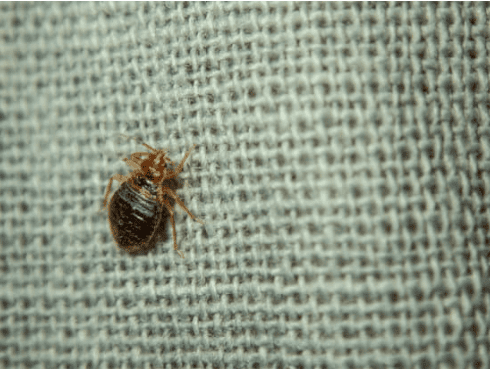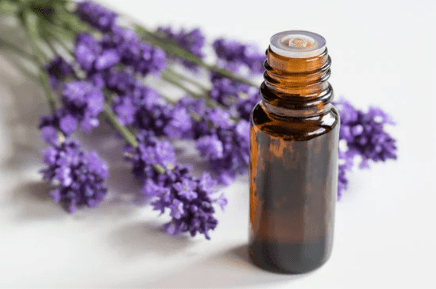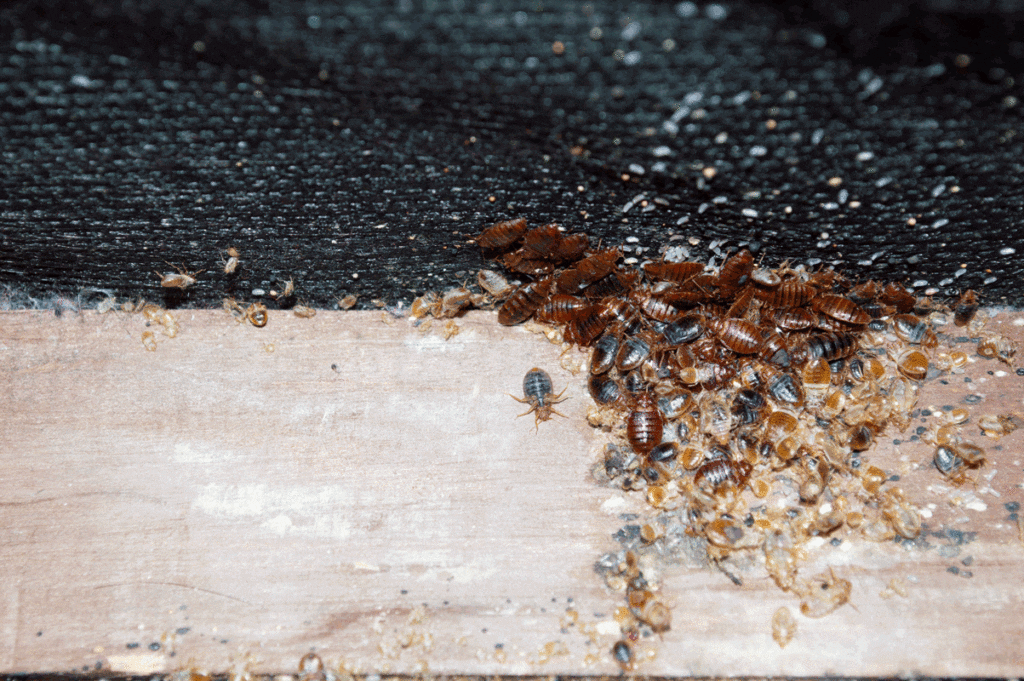Introduction
Bed bugs aren’t just bothersome, they’re becoming a bigger issue that can mess up your sleep and how you feel. But dealing with them usually means using strong chemicals, which is not great. Sadly, these solutions can be risky for your health and the environment. The good news is, there are natural ways to solve this problem that work really well. These ways often use things you already have at home. Plus, these methods are kind to the environment and can help you get rid of bed bugs in a day. So, if you need a quick solution, these eco-friendly methods are a great choice. Read on for more information on how to get rid of bed bugs naturally in a day.
Understanding Bed Bugs
Recognizing the signs of bed bugs and understanding their behavior is the first step towards applying effective natural remedies. Bed bugs, known as Cimex lectularius, are small, brown insects that feed solely on the blood of animals or humans. Their flat bodies and unique feeding habits define them from other common pests.

- Bed Bug Identification and Behavior: Identifying bed bugs can be challenging due to their small size (about the size of an apple seed) and night life nature. They often hide during the day and become active at night when they feed, leaving red, itchy bites as evidence. The Centers for Disease Control and Prevention (CDC) provides insightful information on bed bug biology, describing how they locate their host primarily through heat and carbon dioxide detection.
- Common Hiding Places: Bed bugs are crafty creatures that hide in crevices, seams of mattresses, box springs, bed frames, and even behind wallpaper. They are often found near their feeding areas, making bedrooms a common location for infestations.
- Bed Bug Life Cycle and Breeding Habits: Understanding the lifecycle of bed bugs is vital to controlling them. They undergo five stages of growth, shedding their skin at each stage, known as molting. Female bed bugs lay hundreds of eggs, and with their rapid reproduction rate, even a minor issue can rise into a significant problem.
By equipping yourself with this knowledge about bed bugs, you can proceed to identify and combat an infestation with confidence.
Assessment and Preparation
Before diving into the natural remedies to get rid of bed bugs, an correct assessment of the infestation and thorough preparation of the affected area is crucial. This process ensures that the treatment is targeted and effective.
- How to Assess the Level of Infestation: Understanding the scale of the bed bug infestation guides the approach you will take. Look for telltale signs such as live or dead bed bugs, eggs, molted skins, and fecal spots on bedding or furniture. The infestation’s severity may range from a localized issue to a widespread problem, requiring different levels of intervention.
- Preparing the Affected Area for Treatment: Cleaning and decluttering the infested area is essential to expose the hiding places of bed bugs. Wash all bedding, linens, curtains, and clothing in hot water, and dry them on the highest dryer setting. Seal items that can’t be washed in plastic bags. Vacuum and scrub affected surfaces to remove bed bugs and their eggs, carefully disposing of the vacuum bag afterward.
- Safety Considerations: Although the remedies in this guide are natural, safety remains paramount. Ensure proper ventilation when using essential oils and adhere to the recommended concentrations. Always keep children and pets away from the treatment area as needed.
According to a study by Virginia Tech, proactive efforts in assessment and preparation increase the success rate of bed bug treatments, whether chemical or non-chemical. By methodically evaluating the situation and preparing the affected areas, you lay the groundwork for a successful application of natural remedies, advancing one step closer to a bed bug-free environment.
Natural Remedies to Eliminate Bed Bugs
The elimination of bed bugs doesn’t always require the use of harsh chemicals. Several natural methods, when combined and applied correctly, can offer a practical and environmentally friendly solution to this bothersome problem and help you rid your home of bed bugs in a day. Here are some proven techniques:

- Essential Oils and Herbal Solutions
- Lavender Oil: Known for its repellent properties, lavender oil can deter bed bugs and soothe bites. Mix with water and spray on infested areas.
- Tea Tree Oil: This oil’s antiseptic properties can kill bed bugs on contact. Dilute with water and apply to affected surfaces.
- Neem Oil: An ancient remedy, neem oil can disrupt the life cycle of bed bugs. It’s available in sprays and can be applied directly to infestations.
- Heat Treatment
- Using Steam: Steam can get deep into fabric and kill bed bugs at all stages of their life cycle. Ensure the temperature reaches at least 130°F.
- Washing Fabrics in Hot Water: Regular washing at high temperatures can eliminate bed bugs from clothing and bedding.
- Physical Removal Methods
- Vacuuming: A thorough vacuuming of all infested areas, including crevices, can physically remove bed bugs.
- Manual Removal with Tweezers: This method requires patience and rigor but can be effective in killing visible bed bugs.
Preventive Measures
- Seal Cracks and Crevices: Prevent future infestations by sealing potential hiding spots.
- Regular Inspections and Cleaning: Routine checks and cleaning can prevent bed bugs from gaining an advantage.
- The University of Kentucky has done intense research into non-chemical bed bug control. They have confirmed the benefit of some of these methods. By using these natural remedies, you take control of the situation without hurting your health or the environment.
Monitoring and Follow-Up
Eliminating bed bugs is not a one-time effort. It requires consistent monitoring and follow-up to ensure that the infestation is completely gone and does not return. These continued efforts form a critical part of the natural bed bug control strategy.

- Regular Inspections: Frequent checks of potential hiding spots such as mattresses, furniture seams, and baseboards are essential. Utilizing a flashlight and magnifying glass can aid in detecting early signs of infestation.
- Utilizing Bed Bug Traps: Various types of traps, such as glue traps and interception devices, can be used to monitor bed bug activity. Placing these traps near beds and furniture can provide early detection and containment.
- Repeated Treatments: Depending on the infestation’s severity, multiple applications of natural remedies might be necessary. This ensures that bed bugs at various life stages are addressed.
- Professional Consultation if Needed: If the infestation persists despite best efforts, consulting with a professional exterminator who uses eco-friendly methods may be a wise step.
The monitoring process’s effectiveness is supported by the Institute of Food and Agricultural Sciences at the University of Florida. They highlight the importance of integrated pest management (IPM) principles, including regular monitoring and adaptive strategies.
- Record Keeping and Documentation: Keeping a record of treatments, findings, and observations. This helps in assessing the progress and adapting the approach if necessary. It also provides valuable insights for future prevention.
- Final Cleanup and Sanitation: Once the infestation is under control, a thorough cleaning of all treated areas, coupled with ongoing preventive measures, will help maintain a bed bug-free environment.
- Educating Others in the Household: Educate family members or housemates about the signs of bed bugs. Preventive practices can turn them into allies in maintaining a bed bug-free home.
Success in getting rid of bed bugs naturally in a day or more may require vigilance. Persistence, and strategic follow-up actions are key. This approach ensures the elimination of the current problem. It’s also the prevention of future infestations, leading to lasting peace of mind.
Warnings and Limitations of Natural Remedies:
While natural remedies provide an appealing and environmentally conscious way to address bed bug infestations. It’s essential to recognize their limitations and exercise caution. Here are some critical warnings and limitations to consider:
- Effectiveness
- Varied Results: Natural remedies may not be as potent as chemical treatments and may require repeated applications.
- Not Suitable for Severe Infestations: In cases of widespread infestation, natural remedies might not be sufficient, needing professional intervention.
- Safe Usage of Essential Oils
- Proper Dilution: Essential oils like lavender, tea tree, and neem must be used in proper concentrations to avoid skin irritation or other health issues.
- Avoiding Inhalation and Ingestion: Ensure proper air and take care not to inhale or ingest the oils, as they can be toxic in undiluted form.
- Heat Treatment Considerations
- Risk of Damage: Excessive heat may damage fabrics and other sensitive materials, so it’s vital to follow guidelines on temperature and duration.
- Ineffectiveness in Deep Penetration: Heat may not penetrate deeply enough to kill bed bugs hiding deep within furniture or thick mattresses.
General Precautions
- Consult with Health Professionals if Needed: Some individuals may be more sensitive to natural remedies; consult with healthcare providers if there are concerns about allergies or other health impacts.
- Care with Children and Pets: Keep treatments away from children and pets, as even natural substances can be harmful if misused.
The National Pesticide Information Center (NPIC) provides further guidance on natural bed bug control methods, including safe usage and potential limitations. It’s an essential resource for anyone committed to using these treatments responsibly.
While the appeal of natural solutions lies in their eco-friendly and non-toxic nature, it’s crucial to approach them with an understanding of their potential limitations and risks. It’s important to adhere to guidelines and recognize when professional help may be needed. Additionally, seek reputable sources of information to ensure that you are tackling your bed bug issue responsibly and effectively.
Embrace Natural Solutions to Conquer Bed Bugs
The presence of bed bugs can cause significant distress, and finding the right remedy is crucial. This guide has provided you with a thorough understanding of bed bugs and their behavior. As well as detailed instructions on assessing, preparing, and applying various natural remedies.
Summary of Natural Remedies:
- Essential Oils and Herbal Solutions: Utilize natural substances like lavender, tea tree, and neem oils for effective bed bug control.
- Heat Treatment: Apply steam or wash fabrics in hot water to eliminate bed bugs without chemicals.
- Physical Removal Methods: Leverage vacuuming and manual removal techniques to remove bed bugs.
- Preventive Measures: Implement regular inspections, cleaning, and sealing of cracks to prevent future infestations.
Act Now: With this knowledge and these tools, you can use these remedies to get rid of bed bugs naturally in a day
We Value Your Experience: If you have any questions or would like to share your experiences with these treatments, please feel free to leave a comment or contact us. Your feedback is valuable to us and our community. The power to conquer bed bugs lies in your hands. Embrace these natural solutions with confidence and restore peace and comfort to your living space.




